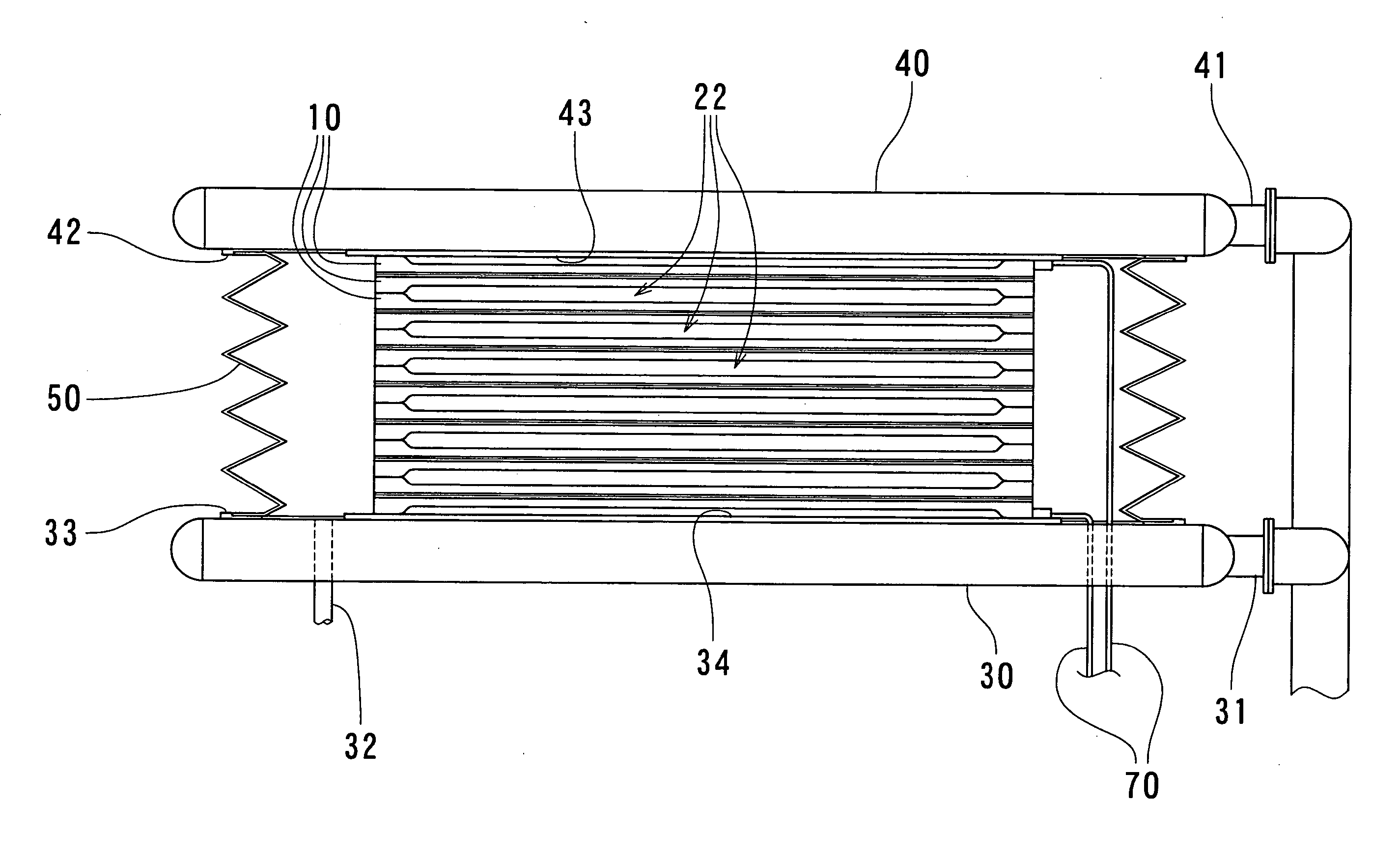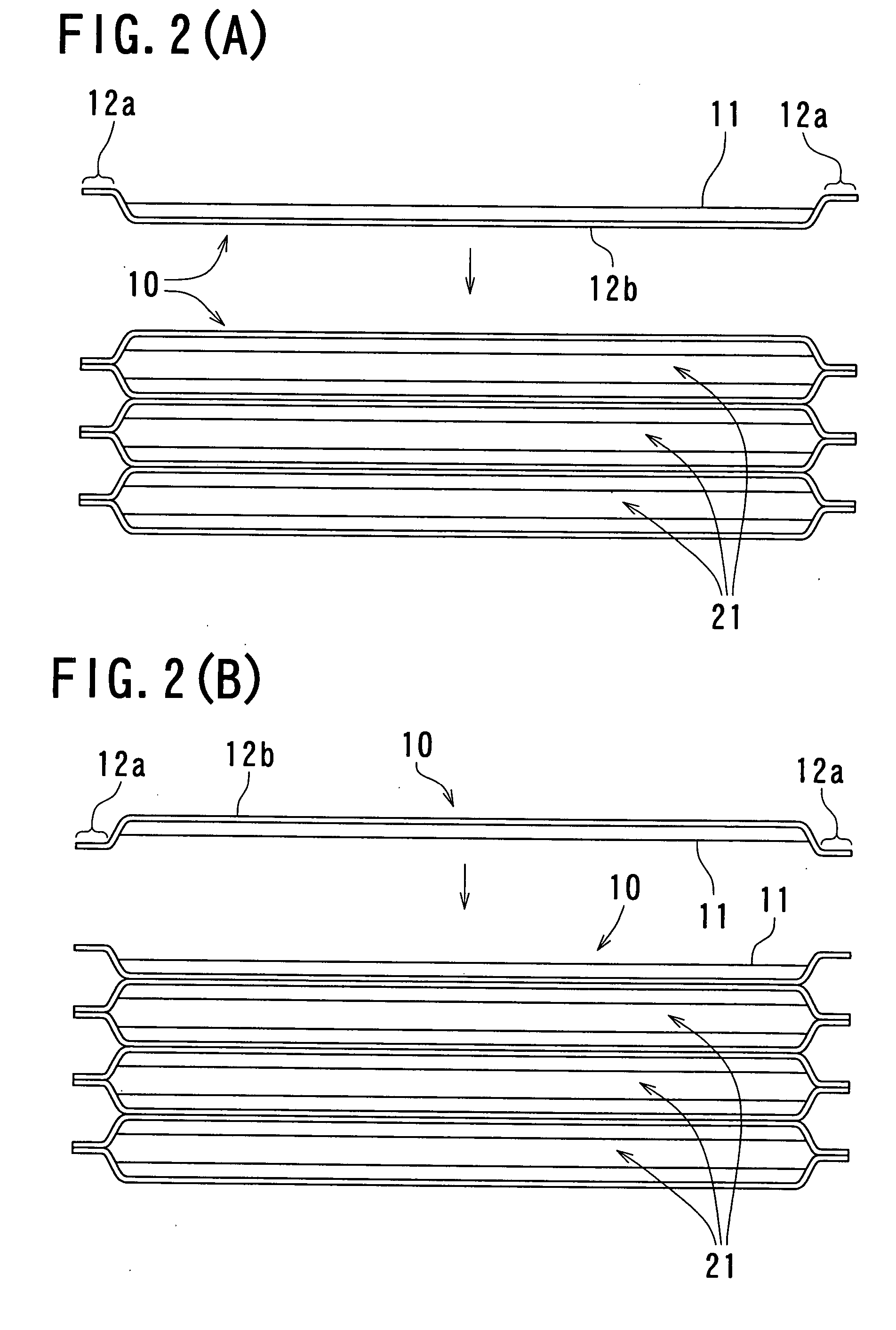Method for manufacturing a heat exchanger
a heat exchanger and manufacturing method technology, applied in the direction of manufacturing tools, light and heating equipment, laminated elements, etc., can solve the problems of deteriorating heat exchange performance, unfavorable variation in the distance between the plates, and the use of heat exchange fluid, so as to reduce the manufacturing cost of the heat exchanger, prevent abnormal increase in the temperature of the table, and control the consumption of energy
- Summary
- Abstract
- Description
- Claims
- Application Information
AI Technical Summary
Benefits of technology
Problems solved by technology
Method used
Image
Examples
Embodiment Construction
[0026] Now, the embodiment of the present invention will be described in detail below with reference to FIGS. 1 to 5. FIG. 1 is a schematic structural view illustrating a state in which a pressing force is applied to a set of stacked heat exchange plates prior to a diffusion bonding process in a heat exchanger manufacturing method according to an embodiment of the present invention, FIGS. 2(A) and 2(B) are descriptive views illustrating a stacking state of heat exchange plates in the heat exchanger manufacturing method according to the embodiment of the present invention, FIG. 3 is a descriptive view illustrating a step for placing the set of stacked heat exchange plates on a table in accordance with the heat exchanger manufacturing method according to the embodiment of the present invention, FIG. 4 is a descriptive perspective view illustrating a state in which the set of stacked heat exchange plates is placed on the table in accordance with the heat exchanger manufacturing method ...
PUM
| Property | Measurement | Unit |
|---|---|---|
| shape | aaaaa | aaaaa |
| pressing force | aaaaa | aaaaa |
| electric current | aaaaa | aaaaa |
Abstract
Description
Claims
Application Information
 Login to View More
Login to View More - R&D
- Intellectual Property
- Life Sciences
- Materials
- Tech Scout
- Unparalleled Data Quality
- Higher Quality Content
- 60% Fewer Hallucinations
Browse by: Latest US Patents, China's latest patents, Technical Efficacy Thesaurus, Application Domain, Technology Topic, Popular Technical Reports.
© 2025 PatSnap. All rights reserved.Legal|Privacy policy|Modern Slavery Act Transparency Statement|Sitemap|About US| Contact US: help@patsnap.com



